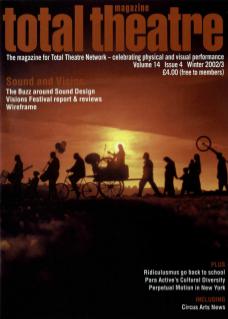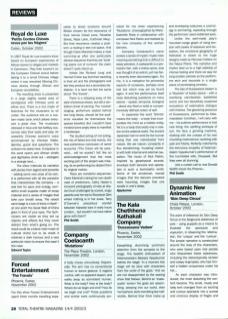A body moves convulsively. Disjointedly. The arm has no conventional human or dance gesture. It regains control, with no apparent reason, and walks away as somnolent human. What is the body? How is the body? Where do we begin and end? How do we begin and end? These questions and similar were continuously provoked for me when experiencing Mutations, choreographed by Marie-Gabrielle Rotie in collaboration with composer Nick Parkin and realised by her new company of five women dancers.
Company Coelacanth's name evokes a sense of mystic: mystic here meaning something that is difficult to easily perceive. A coelacanth is a prehistoric fish, with a hollow spine, that was thought of as extinct, yet has fairly recently been discovered again. For me, it is a metaphor for primordial aspects of ourselves, perhaps once lost but which may yet be found again. It and the performance itself raise disturbing questions on many planes - spatial, temporal, biological - about any fixed or solid or comprehensively defined notion of self.
In Japanese the word 'Shintai’ means the body – a body that incorporates the mind as a holistic entity. Yet it is a body that exists only in relation to the external world. The ancient Japanese had no word for the human being that was individuated from nature. We are nature: constantly in flux, transforming, 'mutating’ violently with both internal and external causation. The music of Nick Parkin, inspired by geophysical sounds, envelops both dancers and spectators in such a biomorphic world. Some of the emotional, mental images that the dancers provoked were haunting images that one recalls in one's sleep.

